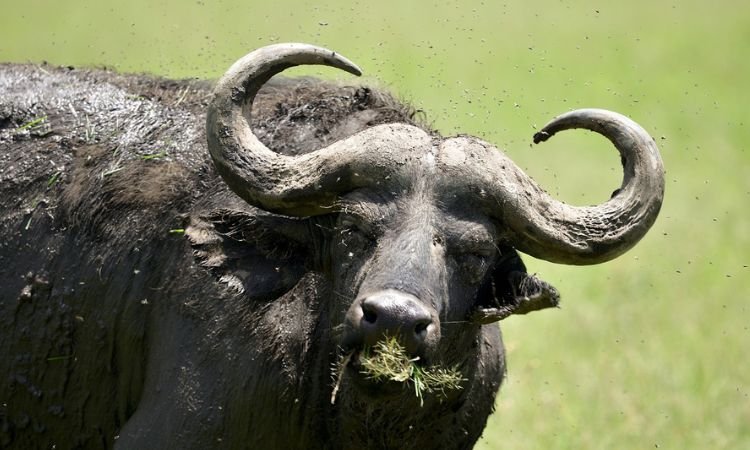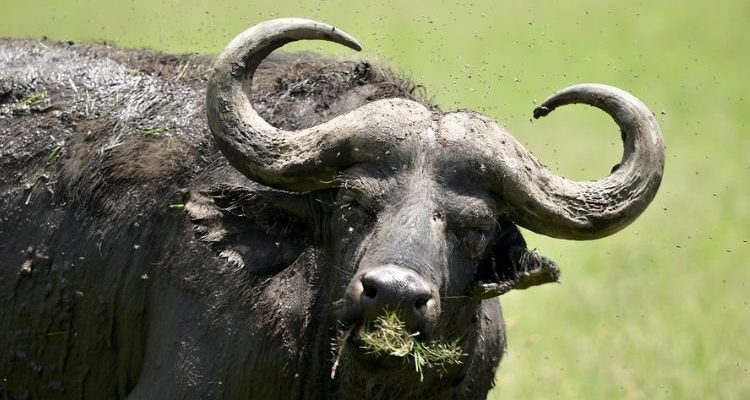
These buffalo are often seen in herds, which adds an interesting layer to how they eat and survive. So, how do they manage to thrive in the wild? Let’s delve into the diet and hunting strategies of the African buffalo. Trust me, it’s a wild ride!
Understanding the African Buffalo’s Diet
African buffalo are herbivores, meaning they primarily eat plants. Their diet mainly consists of grasses, but they’ll also munch on other plant materials when necessary. Here’s where things get interesting: buffalo are selective grazers. They choose their meals based on the season and the available vegetation. So, if you’re picturing them just grazing aimlessly, think again!
During the wet season, buffalo feast on lush, nutrient-rich grasses that sprout up after rains. This rich diet helps them pack on weight and get ready for the tougher dry season, when food becomes scarcer. It’s like prepping for a long winter by making sure you have enough snacks stocked up—except in this case, the buffalo have to work together to find food.
Seasonal Variations in Diet
The diet of African buffalo changes with the seasons. In the rainy months, fresh, nutritious grasses dominate their menu. But as the dry season sets in, these grasses can become long, fibrous, and less appealing. This transition forces buffalo to adapt. They may start munching on shrubs or even tree leaves to fill their bellies.
Not only does this adaptability help them survive, but it also showcases the buffalo’s intelligence. You might be wondering how they manage to find enough food with these changes. Well, they have a remarkable ability to remember locations of good grazing spots, often returning to places they’ve found success before. It’s like they have a mental map of the best buffet lines!
Group Dynamics and Feeding Strategies
Buffalo are social animals, often found in large herds that can number in the hundreds. This herd mentality isn’t just for safety; it’s also crucial for feeding. You see, with so many mouths to feed, they can work together to locate the best feeding grounds.
When searching for food, buffalo often employ a method called “herd grazing.” They move as a unit, which helps them cover more ground and find more food. Think of them as a team of friends going out for dinner—everyone has to agree on where to eat, and they help each other get there.
But here’s the kicker: not all buffalo eat the same thing at the same time. Some members of the herd might focus on certain grasses while others scout for more challenging finds. This way, they maximize their chances of survival and make sure everyone gets a bit to eat. Teamwork makes the dream work, right?
Herd Protection and Safety
One of the major reasons buffalo travel in herds is protection from predators. These animals aren’t at the top of the food chain, so they need all the advantages they can get. When they’re grazing, a few buffalo will take on the role of lookouts, keeping an eye out for lions or hyenas that might want to make a meal out of them.
When danger approaches, the herd band together, forming a protective circle around the young and vulnerable members. It’s instinctual behavior—like a family protecting their little ones at a crowded park. Their sheer size and numbers can often intimidate predators, making it harder for them to target an individual.
Hunting Strategies: The Role of Predators
Now, you might be thinking, “What about hunting? Aren’t buffalo the prey?” That’s true, but let’s flip the script here. Buffalo themselves can turn the tables in certain situations, particularly when they’re threatened.
Large groups of buffalo sometimes take on predators as a defensive strategy. When they sense danger, they can charge at a predator in a coordinated effort. Imagine a well-orchestrated football play where everyone moves together to fend off an opponent. The sheer force of hundreds of buffalo running together can scare off all but the most determined predators.
Defensive Aggression
Buffalo can be surprisingly aggressive when defending their herd. It’s not uncommon for them to chase after lions or other threats if they feel cornered. This aggression isn’t mindless; it’s calculated. They know that by showing strength, they can deter potential attacks.
Interestingly, this trait makes buffalo a challenge for big cats. Lions often prefer to hunt solitary or weak animals, so a formidable herd of buffalo can be a tough nut to crack. Predators quickly learn that messing with a healthy buffalo herd isn’t worth the risk.
Conservation and Threats to the African Buffalo
While African buffalo are resilient, they do have their challenges. Habitat loss, poaching, and diseases like brucellosis threaten their populations. Conservation efforts are critical for ensuring these magnificent animals continue to thrive in the wild.
Protected areas, national parks, and wildlife reserves play an essential role in helping buffalo populations recover. Educating local communities about the importance of buffalo in the ecosystem also helps. After all, a healthy buffalo population means a more balanced ecosystem—like the delicate balance of flavors in a well-cooked meal.
How You Can Help
If you’re passionate about wildlife, consider supporting organizations that focus on conservation efforts. Even small contributions can go a long way in helping protect these animals and their habitats. You might also consider visiting reserves or parks where you can see African buffalo in their natural environments. It’s not just a trip; it’s an opportunity to appreciate the beauty of nature and our role in preserving it.
The diet and hunting strategies of the African buffalo truly highlight how these animals thrive despite the challenges they face. From their unique feeding habits to their remarkable group dynamics, buffalo are a testament to the power of teamwork and adaptability. Understanding their behaviors not only enriches our appreciation for them but also reminds us of our responsibility to protect their habitats and ensure their survival. So next time you think of African wildlife, remember the buffalo—they’re not just grazers, but essential players in the intricate dance of life in the savanna.

